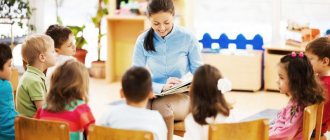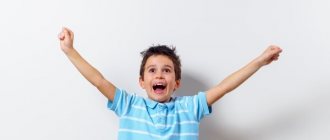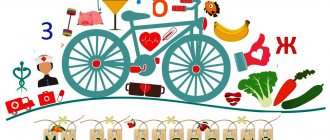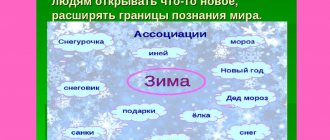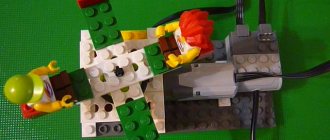Observation and analysis of the walk
Assessment of conditions and organization of various activities for children during walks
Age group ________________________
Amount of children ________________________________
| Questions for analysis | Comments |
| Sanitary condition of the site | |
| Remote material | |
| Availability and quantity, marking, etc. | |
| Safety | |
| Suitable for season and age | |
| Organization of a walk | |
| Duration (corresponding to mode) | |
| Individual work with children on the development of basic movements | |
| Outdoor games organized by the teacher (name, number of children participating in the games) | |
| Outdoor games organized by children (name, number of children participating in the games) | |
| Competition games (name, number of children participating in the games) | |
| Independent motor activity of children | |
| Observations in nature | |
| Labor in nature | |
Conclusion:
- Conditions for children's walks in preschool educational institutions
- Availability of structural components of a walk:
-observation of natural objects,
-individual work on the development of basic movements,
- labor processes,
-outdoor games,
-independent activity.
- Efficiency, expediency and variety of techniques for managing various activities of children during a walk, compliance with the season, use of attributes and buildings.
- Taking into account weather conditions, children’s interests and individual characteristics when conducting a walk.
- Techniques for ending a walk, maintaining children’s physical activity in the fresh air
Algorithm for reading and telling literary works
Subject " "
Program content: ______________________________________________
Material:___________________________________________
Organization:
| Parts of the lesson and their goals | Description of interaction with children in direct speech | Possible methodological techniques |
| Preparation for the perception of the text: - organizing new or mobilizing existing experience; — lexical preparation; - stimulating attention and interest in the work | — preliminary conversation; - examining objects, toys, illustrations; — conducting experiments; — display of the author’s portrait; - a story about the author (art. gr.); — explanation of the features of the genre; - explanation of words and expressions; - goal setting | |
| Organization of full perception of the work | - artistic reading (storytelling); — accompanying display of illustrations, game actions (younger group); - listening to an audio recording | |
| Helping children understand the content and artistic means of a work (deepening the perception of the work) | - conversation about what you read; — viewing, discussing illustrations, voicing them; - selective reading at the choice of children and teacher | |
| Consolidating impressions from the listened work and interest in it | - repeated reading of short works; - selective reading of the most striking passages; — listening to an audio recording; - use of dramatization elements; - looking at illustrations; — dubbing illustrations (reproducing characters’ dialogues) |
Methods for developing coherent speech
Analysis of the organization and conduct of didactic games for the development of dialogic speech
Game theme:
| Analysis criteria | Grade | Comments | |
| + | — | ||
| 1Organization and preparation for the game: -psychological attitude - accepting the invitation of children -availability of material | |||
| 2Communication of a game and speech task through a problem, contradiction, speech difficulties in characters and children | |||
| 3Motivation for a goal or task | |||
| 4Game title message | |||
| 5Explanation of the course of the game, conditions with a focus on the result | |||
| 6Indications for the quality of speech utterances, dialogical skills and abilities | |||
| 7Children’s acceptance of the game task, interest | |||
| 8The role of the teacher in the game | |||
| 9Teacher's guide to the game | |||
| 10Children's interest in the game | |||
| 11Following the rules | |||
| 12Violation of the rules | |||
| 13Dynamism of the game | |||
| 14Assessment of children’s dialogical skills | |||
| 15End of the game - reflection | |||
Conclusions:
Offers:
PM.04 Establish how sanitary and educational work is carried out in preschool educational institutions with children (classes, games, holidays...) and parents (instructions, conversations, visual aids) Provide a list of activities carried out by the teacher and medical worker in a specific group. Draw a conclusion about the feasibility of collaboration and the most interesting forms.
| month | event | target |
| September | ||
| October | ||
| November | ||
| December | ||
| January | ||
| February | ||
| March | ||
| April |
Conclusion:____________________________________________________________________________________________________________________________________________________________________________________________________________________________________________________________________________________________________________________________________________________________________________________________________________________________________
PM.04 Establish how musical and educational work with children (classes, games, holidays...) and parents (conversations, visual aids) is carried out in preschool educational institutions. Provide a list of activities carried out by the teacher and music director in a specific group. Draw a conclusion about the feasibility of collaboration and the most interesting forms.
| month | event | target |
| September | ||
| October | ||
| November | ||
| December | ||
| January | ||
| February | ||
| March | ||
| April |
Conclusion:____________________________________________________________________________________________________________________________________________________________________________________________________________________________________________________________________________________________________________________________________________________________________________________________________________________________________
Progress of the walk
Introductory part
Educator: Guys, come closer to me. I’ll tell you a riddle:
If the leaves on the trees have turned yellow,
If the birds flew to a distant land,
If the sky is gloomy, if it rains,
What is this time of year called? ( autumn )
Educator: Yes, it's autumn . Who will tell a poem about autumn . (children recite familiar poems)
the autumn months in order .
Guys, what signs of autumn do you know?
Sample answers from children: It has become cold, the leaves turn yellow and fall, it rains often, there are frosts in the mornings, the days are getting shorter, the nights are longer, insects and animals are preparing for winter.
Second part
Educator: Yes, autumn is the time of year when all nature changes. The days are getting shorter, the sun is not warming up, it is getting colder day by day, and it rains often. By the end of autumn there will be frosts . Migratory birds fly south, wintering birds move closer to people.
Educator: Guys, what do you think the weather is like today? (gloomy, cloudy, windless)
Why?
(the sun is not visible, the sky is gray, the sky is cloudy, there is no wind)
.
Let's take a breath of autumn air .
Breathing exercise “Smells of nature”
Educator: What smells did you smell? (rotted leaves, spicy grass, mushrooms, smoke)
Frontal observation “What did the trees on the site look like?”
1. Examining trees and shrubs up close and from afar .
2. Children admiring the beauty of trees.
Educator: Guys, look at the multi-colored carpet that covers the ground. What kind of carpet is this? ( Autumn Fallen Leaves )
Let's take the leaves in our hands, what do they feel like?
(dry, rough, rustling)
How do the leaves rustle?
(sh-sh-sh-sh-sh)
Educator: Let's imagine that we are autumn leaves . Let's show how they fall to the ground (children perform voluntary movements)
Low mobility game “ Autumn Leaves”
leaves are quietly spinning ,
The leaves fall quietly under our feet.
And they rustle and rustle underfoot,
As if they want to get dizzy again.
Educator: Yes, in the fall you can often see leaves falling, what is this phenomenon called? (leaf fall)
There were a lot of leaf attacks on our site. Let's see what trees they come from.
Didactic game “Which tree is the leaf from?”
Search tasks.
1. Choose the most beautiful tree for you.
2. Find the reddest (yellow)
tree.
3. Find a leaf that fell today, yesterday, long ago. Tell us how they differ?
Educator: What else grows on our site? ( shrubs )
What is the difference between
a shrub and a tree ? (many thin trunks, low, small leaves, some berries)
Speech exercises.
Game “Say beautiful words about
autumn ” (Goal: be able to select adjectives for a given word)
.
The teacher notices feeders on the veranda.
Educator: What is this, guys? (feeders)
What are they needed for? (for feeding birds)
What can you feed the birds? (seeds, pieces of bread, grains)
Why do some birds fly south with the onset of cold weather? (it became cold, there were no insects, there was little food for birds)
What are these birds called? (migratory)
What are the names of those birds that stay with us for the winter? (wintering)
Educator: Guys, let's turn into birds and play a game.
The third part
Outdoor game: “Migration of birds”
Tasks:
Strengthen the health of players.
Promote their proper physical development.
Promote the acquisition of vital motor skills.
Perform game actions in accordance with the text.
Develop the ability to move in different directions without bumping into each other.
Develop orientation in space.
Cultivate endurance and patience.
Self-analysis for the integrated lesson “Walking with a Kolobok”, junior group
Self-analysis of Organized Educational Activities
on the topic of:
"Walk with Kolobok"
(junior group)
Target:
identify the level of development of children’s knowledge and ideas during the school year.
Tasks:
Educational:
Create conditions for securing geometric shapes, highlighting their properties (color and shape).
Create conditions for using the expression “how many”, “many”, “one”
Create conditions for repetition of general concepts: domestic and wild animals.
Improve the ability to name and distinguish between young domestic animals.
Create conditions for the fixation of vegetables and fruits (where they grow)
Create conditions for consolidating the ability to select words that are opposite in meaning (“on the contrary”).
Educational:
Provide conditions for encouraging children to engage in speech activity and encourage them to engage in dialogue.
Promote the development of logical thinking, attention, imagination, visual perception.
To promote the development of motor activity of children in educational activities.
Improve children's ability to form nouns with
using diminutive suffixes.
-improve children’s ability to use nouns in speech with
prepositions (in, on, under, about).
-Create conditions for the development of fine motor skills.
Educational:
Foster and encourage initiative and independence.
Cultivate interest in organized educational activities.
Cultivate kindness and curiosity.
Priority educational area:
cognitive development (FCDM).
Integration of educational areas
: Cognition, Communication,
Socialization, Artistic creativity.
Activities:
communicative, cognitive, musical, motor, gaming.
Methodical techniques:
Gaming:
surprise moment: bun, classification by subject; puzzles; explanation.
Verbal:
questions for children, repetition and clarification, reminder, encouragement.
Visual:
picture - rules, toys of wild and domestic animals, models of fruits and vegetables, tree, “bed”, 3 multi-colored hoops, cubes, balls.
Practical:
putting fruits and vegetables into baskets, classifying animals, guessing riddles, playing with three hoops, speaking the other way around, making koloboks.
Health-saving technologies:
change of activity, psycho-gymnastics, physical minute.
Preliminary work:
learning poems, talking about fruits and vegetables, wild and domestic animals and their young. Studying primary colors, geometric shapes, modeling salt dough.
Equipment:
toys: bun, bear, wolf, hare, fox;
demonstration material: cubes, plastic balls; figures of domestic and wild animals; dummies of vegetables and fruits; baskets, a picture with rules, boards for modeling, napkins.
To carry out this DEA, the following was compiled:
- Summary of educational activities, attributes have been prepared, the group has been formed in accordance with the theme of OOD and safety rules;
- Demonstration material has been prepared and rationally placed
(tree and bed, house, Christmas tree, multi-colored hoops);
- Handouts have been prepared (modeling boards (according to the number of children), colored salt dough for each child, napkins)
The lesson was carried out in accordance with the notes. The abstract was compiled independently, in accordance with the objectives of the basic general education program, corresponding to the given age of the children. To implement each task, techniques were selected in an interesting and entertaining way. Throughout the lesson, visual aids were used to stimulate and activate children’s thinking. Their placement and use was rational, thoughtful in the learning space and in the lesson. Music was used during the lesson to enhance emotional perception. The educational activity was planned and carried out in a playful way, based on the children’s existing knowledge and additional work. In the course of solving game-based learning situations, children had the opportunity to show their stock of accumulated knowledge. The whole move is thought out, all parts are interconnected and united by one common plot. The OOD consisted of 3 parts (introductory, content and reflective). In the first part of the OOD, the organizational technique “Greeting” in poetic form was aimed at developing communicative qualities and establishing friendly relationships both within the children’s team and between guests and children. The lesson is dynamic, it includes techniques that provide for a quick change of activity. “A surprise moment”, finding a way out of a problematic situation with a kolobok, a walk in a magical forest - moving around the group, conversation.
All points are logical and consistent. The lesson expanded and generalized children's ideas about familiar fairy tales and rules of behavior in the forest. About wild and domestic animals, about vegetables and fruits. Reinforced children's knowledge of primary colors and geometric shapes. We activated our vocabulary by playing “in reverse”. We developed fine motor skills through finger gymnastics and kolobok sculpting—working with dough. We improved children’s ability to show care and independently express kindness.
When building a cognitive lesson, we took into account the development of physical abilities: the textual content of the physical training session was accompanied by movements to develop motor activity.
The techniques in the lesson were of a playful nature and were based on game-based learning situations, in accordance with the Federal State Educational Standard.
At every moment of the lesson, we tried to guide the children to find solutions to the problem, helped consolidate knowledge, activate independence and maintain a positive, emotional attitude. The creation of search problem situations intensified the mental and speech activity of children.
During the lesson, we tried to communicate with the children on the same level, and tried to maintain the children’s interest in the lesson throughout the entire time.
Summing up the results of the lesson was organized in the form of reflection, using the method of analysis, the success of completed tasks and the method of self-assessment by children of their achievements and the capabilities of their peers. We believe that the goal we set has been achieved and the tasks have been fully realized.
